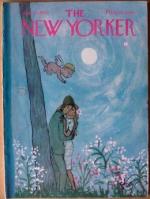|
This section contains 454 words (approx. 2 pages at 300 words per page) |

|
Hapworth 16, 1924 Summary & Study Guide Description
Hapworth 16, 1924 Summary & Study Guide includes comprehensive information and analysis to help you understand the book. This study guide contains the following sections:
This detailed literature summary also contains Related Titles on Hapworth 16, 1924 by J. D. Salinger.
Preview of Hapworth 16, 1924 Summary:
The seven-year-old Seymour in his letter reveals the strong influence on his beliefs of Indian religious mysticism, particularly the Vedanta branch of Hinduism. In this connection a functioning belief system becomes evident as the infant terrible matter-of-factly prophesies future events in his life and the lives of certain other Glass family members, especially Buddy. Foreknowledge and predestination, reincarnation (e.g., Seymour's allusions to his "appearances"), and revelation help shape the oracular, egocentric world view by which he lives.
For all his very high-and-mighty manner, young Seymour acts as if he were under the spell of a very powerful being; an element of madness happens to accompany his tendency toward religious mysticism.
While his sexual awareness and responsiveness to female allure are given considerable attention in this story, much more is made of the child's literary interests and proclivities. He mentions his having written a considerable amount of poetry...
|
This section contains 454 words (approx. 2 pages at 300 words per page) |

|




